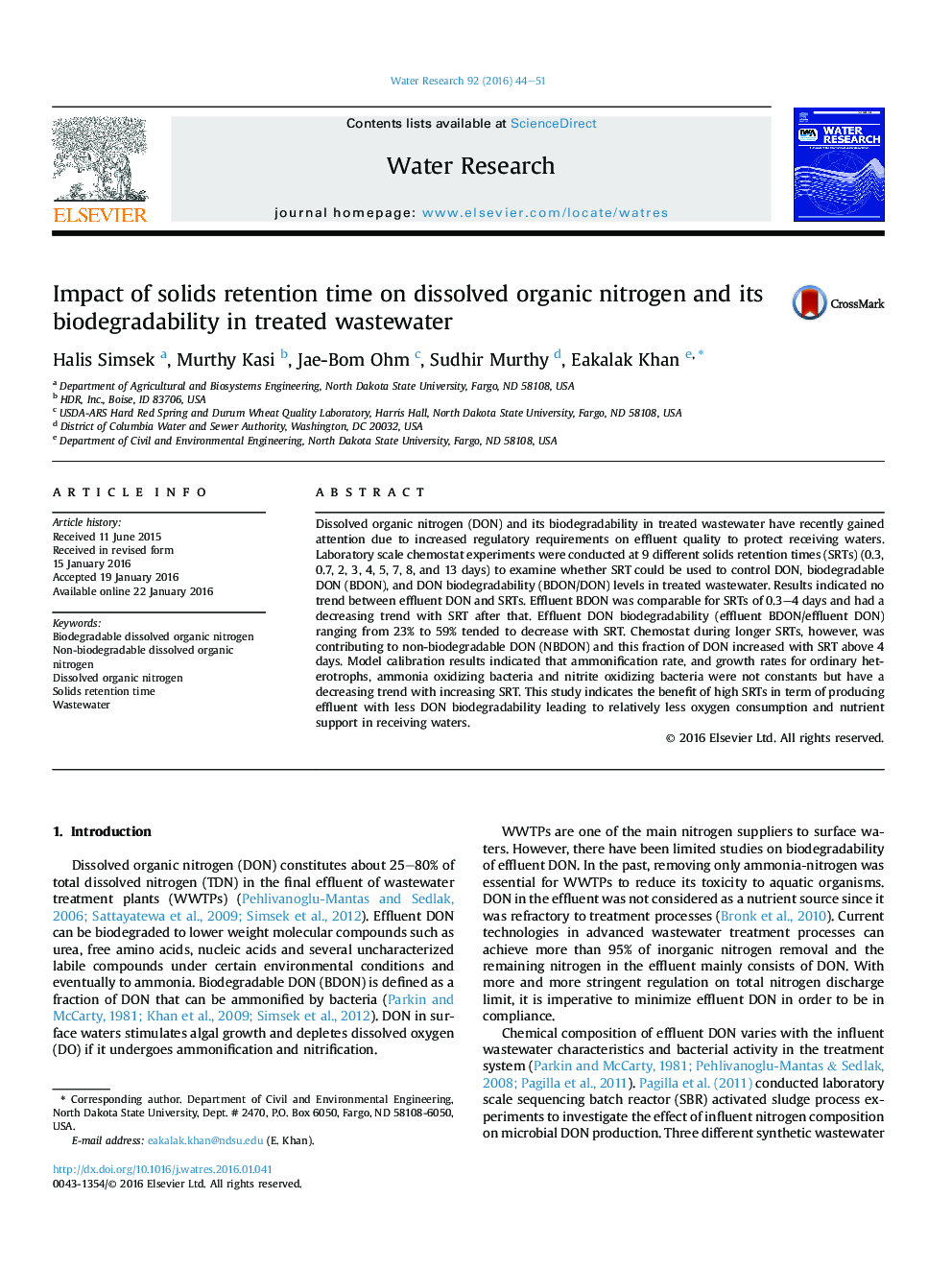| کد مقاله | کد نشریه | سال انتشار | مقاله انگلیسی | نسخه تمام متن |
|---|---|---|---|---|
| 6365242 | 1623076 | 2016 | 8 صفحه PDF | دانلود رایگان |
- SRT can be used to control biodegradable dissolved organic N removal.
- Non-biodegradable dissolved organic N production increases with SRT.
- Higher SRTs result in more soluble N production.
- Ammonification rate decreases with increasing SRT.
Dissolved organic nitrogen (DON) and its biodegradability in treated wastewater have recently gained attention due to increased regulatory requirements on effluent quality to protect receiving waters. Laboratory scale chemostat experiments were conducted at 9 different solids retention times (SRTs) (0.3, 0.7, 2, 3, 4, 5, 7, 8, and 13 days) to examine whether SRT could be used to control DON, biodegradable DON (BDON), and DON biodegradability (BDON/DON) levels in treated wastewater. Results indicated no trend between effluent DON and SRTs. Effluent BDON was comparable for SRTs of 0.3-4 days and had a decreasing trend with SRT after that. Effluent DON biodegradability (effluent BDON/effluent DON) ranging from 23% to 59% tended to decrease with SRT. Chemostat during longer SRTs, however, was contributing to non-biodegradable DON (NBDON) and this fraction of DON increased with SRT above 4 days. Model calibration results indicated that ammonification rate, and growth rates for ordinary heterotrophs, ammonia oxidizing bacteria and nitrite oxidizing bacteria were not constants but have a decreasing trend with increasing SRT. This study indicates the benefit of high SRTs in term of producing effluent with less DON biodegradability leading to relatively less oxygen consumption and nutrient support in receiving waters.
111
Journal: Water Research - Volume 92, 1 April 2016, Pages 44-51
